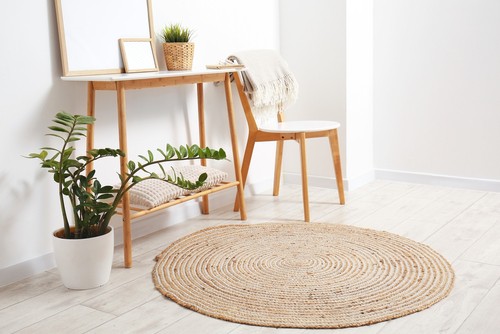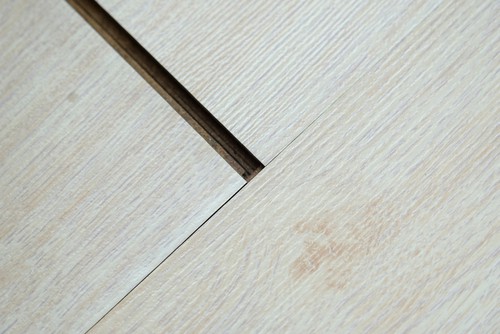
The Health Benefits of Bamboo Flooring
November 27, 2023
Pairing Rugs with Laminate Flooring
February 1, 2024Laminate Flooring and Allergies: A Healthy Home Solution

Laminate Flooring and Allergies A Healthy Home Solution
Laminate Flooring and Allergies: A Healthy Home Solution. In our quest for a healthy and allergy-resistant home environment, the choice of flooring plays a pivotal role.
This article explores the symbiotic relationship between laminate flooring and allergies, highlighting how laminate flooring can contribute to a healthier living space.
A healthy home environment is paramount for our well-being. It not only provides physical comfort but also reduces the risk of allergies and respiratory issues.
The purpose of this article is to delve into the significance of laminate flooring in fostering a healthier home and its role in mitigating allergies.
Table of Contents
Allergies and Their Impact
Allergies are immune system responses to allergens that can trigger various symptoms, such as sneezing, itching, congestion, skin rashes, and even asthma attacks.
In homes, common allergens like dust mites, pet dander, and mold spores can be pervasive, impacting the health and well-being of residents.
Laminate Flooring: An Allergy-Friendly Option
Laminate flooring, with its synthetic origins, has gained popularity as a flooring choice that offers aesthetics resembling natural materials like wood or stone.
Its multi-layered structure equips it with features that make it exceptionally suitable for individuals prone to allergies.
How Laminate Flooring is Constructed
Laminate flooring typically consists of several layers, each serving a specific purpose. The core layer provides stability, while the design layer mimics the appearance of wood or stone.
A protective top layer ensures durability and resistance to wear and tear. The combination of these layers creates a flooring surface that is both visually appealing and highly functional.
The Smooth and Non-Porous Surface
One of the key advantages of laminate flooring is its smooth, non-porous surface. Unlike materials like carpet, which can trap allergens within their fibers, laminate flooring offers no such refuge.
Allergens such as dust mites, pollen, and pet dander find it challenging to adhere to the surface, making it easier to clean and maintain an allergen-free environment.
Benefits of Laminate Flooring for Allergy Sufferers

One of the fundamental benefits of laminate flooring for allergy sufferers is its ability to resist allergen retention. Let’s delve deeper into the advantages it offers:
Reduced Allergen Accumulation
Laminate flooring’s smooth surface and low porosity reduce the accumulation of allergens. This means that fewer allergens are present within the living space, resulting in a healthier indoor environment.
Easy Cleaning and Maintenance
Cleaning laminate flooring is a straightforward process. Regular sweeping or vacuuming, coupled with occasional damp mopping, can effectively remove dust and allergens.
Unlike carpets that require deep cleaning to reach allergens trapped within the fibers, laminate flooring offers hassle-free maintenance.
Improved Indoor Air Quality
By curbing allergen levels, laminate flooring plays a pivotal role in elevating indoor air quality. This is of paramount importance for individuals grappling with allergies or respiratory conditions. Improved air quality contributes to better health and overall well-being.
Choosing the Right Laminate Flooring

Selecting the appropriate laminate flooring for allergy concerns involves considering various factors. Here are the key aspects to keep in mind:
Thickness and Quality
Opt for laminate flooring of adequate thickness and quality. Thicker flooring tends to be more durable and provides better insulation against sound and temperature variations. High-quality laminates are also more resistant to wear and damage.
Finish Options
Laminate flooring comes in various finish options, from matte to high-gloss. The finish not only affects the aesthetics but also the texture of the flooring. Choose a finish that complements your decor and provides the desired level of slip resistance.
Proper Installation
Proper installation is critical to ensuring the effectiveness of laminate flooring in allergen management.
It’s advisable to hire professional installers who are experienced in working with laminate flooring. Proper installation also helps prevent issues such as gaps or unevenness.
Maintaining a Healthy Home Environment with Laminate Flooring
Maintaining a healthy home environment goes beyond the choice of flooring. However, laminate flooring can significantly contribute to this goal. Here are some additional strategies:
Cleaning and Maintenance Tips
Practical guidance on cleaning and maintaining laminate flooring is crucial in minimizing allergen accumulation. Regularly sweeping or vacuuming with a brush attachment can remove surface dust and allergens.
For a deeper clean, damp mopping with a mild cleaning solution designed for laminate flooring is recommended. Avoid using excessive water, as moisture can damage the laminate.
Using Rugs and Mats Strategically
Strategically placing rugs and mats in high-traffic areas can further reduce allergen presence. These rugs can trap dirt and allergens that might be tracked in from outside, preventing them from spreading throughout the home.
Ventilation and Air Purification
Proper ventilation is essential for maintaining a healthy indoor environment. Ensure that your home has adequate ventilation to allow fresh outdoor air to circulate and reduce indoor air pollutants.
Consider using air purifiers with HEPA filters to further improve indoor air quality.
Allergies and Flooring Misconceptions

Common myths and misconceptions related to flooring and allergies can lead to confusion. It’s essential to address these misconceptions and provide evidence-based information:
Myth 1: Carpet is the Worst Choice for Allergies
While carpets can trap allergens, regular and thorough cleaning can minimize this issue. Additionally, some carpets are designed to be hypoallergenic and are equipped with features to resist allergen accumulation.
Myth 2: Hardwood Flooring is Allergen-Proof
While hardwood flooring is easier to clean than carpet, it’s not entirely allergen-proof. Dust and allergens can still settle on its surface, requiring regular cleaning to maintain indoor air quality.
Myth 3: Flooring Alone Can Solve Allergen Problems
Flooring choice is essential, but it’s just one aspect of creating an allergy-resilient home. Other factors, such as regular cleaning, proper ventilation, and allergen-proof bedding, also play crucial roles in allergy management.
Frequently Asked Questions (FAQs)
What is the best type of flooring for allergy sufferers?
The best flooring for allergy sufferers is one that resists allergen retention. Laminate flooring, with its smooth surface and low porosity, is considered an excellent choice for allergy-prone individuals.
How does laminate flooring help reduce allergens in the home?
Laminate flooring’s smooth surface and non-porous nature make it less likely to trap allergens like dust mites, pet dander, and pollen. Regular cleaning can effectively remove any allergens that do accumulate.
Are there any specific cleaning products recommended for laminate flooring and allergies?
While there are many cleaning products available, it’s advisable to use gentle, allergen-friendly cleaning solutions. Avoid harsh chemicals that may exacerbate allergies.
Can laminate flooring be installed in all areas of the home, including kitchens and bathrooms?
Yes, laminate flooring can be installed in various areas of the home, including kitchens and bathrooms. However, it’s essential to follow manufacturer guidelines and ensure proper installation to prevent water damage.
Is laminate flooring environmentally friendly?
Laminate flooring can be environmentally friendly, especially when made from sustainable materials. Look for certifications like FSC (Forest Stewardship Council) to ensure eco-friendly options.
Laminate Flooring and Allergies: A Healthy Home Solution – Conclusion

In conclusion, laminate flooring presents itself as a compelling choice for creating a healthier and allergy-resilient home environment.
Its inherent qualities and easy maintenance contribute to reduced allergen levels and improved indoor air quality.
By making an informed choice in flooring, we can take a significant step toward a healthier and more comfortable home.
Are you seeking a professional and reliable laminate flooring installation contractor in Singapore? Contact us today!



